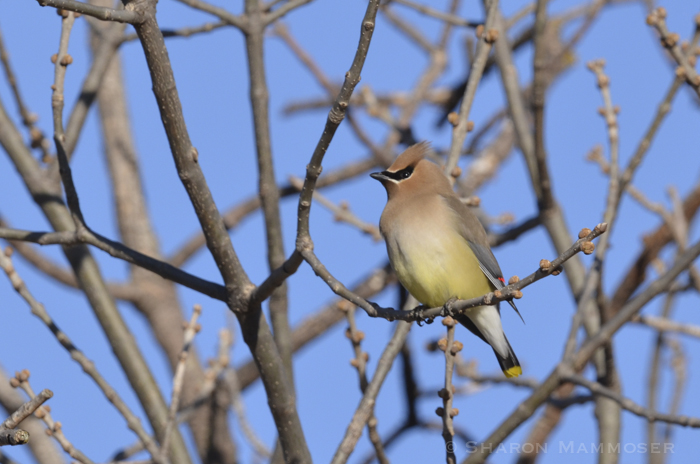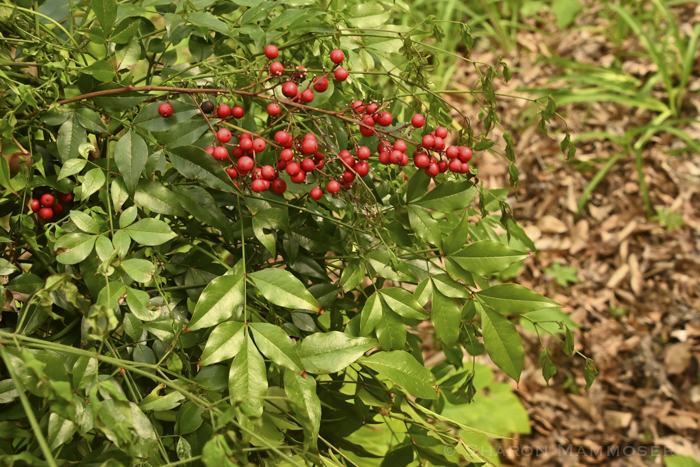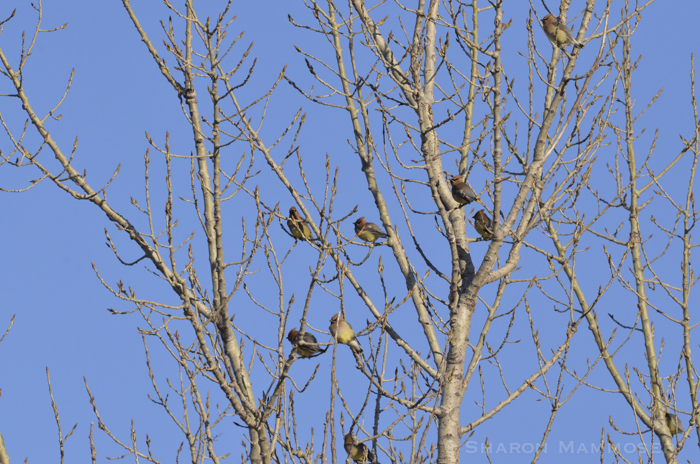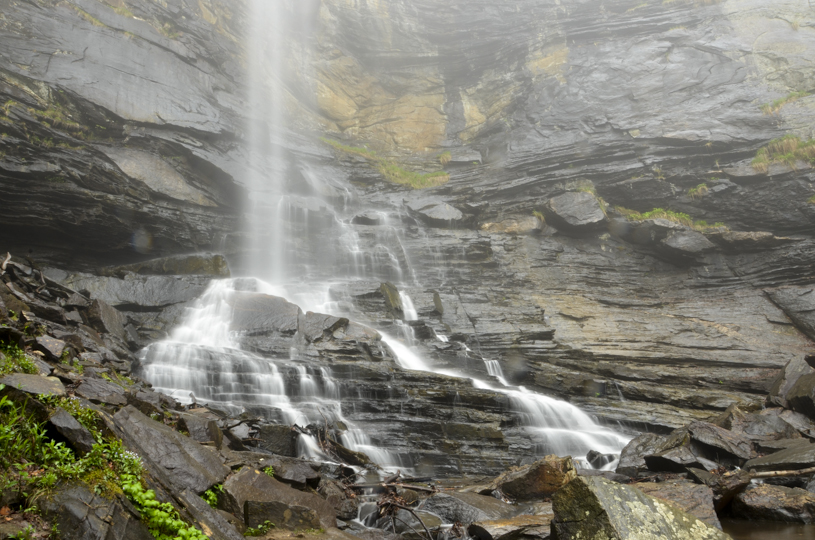Did you recognize the leaves and red berries in last week’s puzzler? It is a shrub sold at nurseries called Nandina, or Heavenly Bamboo, also known as Nandina domestica, Sacred Bamboo, and Chinese Sacred Bamboo.
Remember I was telling you about finding this “mystery tree” in my front yard and wondering what it was? This past spring I finally looked it up and discovered its name and the fact that its beautiful red berries are actually toxic to birds.
According to Audubon “Nandina berries contain cyanide and other alkaloids that produce highly toxic hydrogen cyanide (HCN) which is extremely poisonous to all animals. Sudden death may be the only sign of cyanide poisoning and death usually comes in minutes to an hour. “

There was a story back in 2009 about a bunch of cedar waxwings found dead in front of a school in Georgia. When they looked into the cause they discovered partially digested berries of Heavenly Bamboo in their stomachs. The College of Veterinary Medicine at the University of Georgia had this to say about it:
“On gross examination, the gastro-intestinal tract of these birds were distended by intact and partly digested berries of Nandina domestica Thunb. (Heavenly Bamboo). These berries were the only ingesta present within the digestive tract of these birds. In all the examined birds, there were gross pulmonary, mediastinal, and tracheal hemorrhages. Microscopically, several tissues and organs including the lungs, liver, kidney, proventriculus, ventriculus, uvea of the eye, heart, the meninges and the brain were diffusely congested and hemorrhagic. The congestion, hemorrhage and edema were very marked in the lungs.”
When I shared this story with my husband, an avid birder and nature-lover like me, he immediately went out to our front woods and dug up these trees. Why plant something in your yard that can potentially kill birds? Offering a nice winter treat to them that can cause death seems cruel.

The sites I visited and the tag on the Heavenly Bamboo I saw at a local nursery names attracting birds as one of the pluses of this plant. I find this amazing! How can they not even mention that this red berry is poisonous and can cause death? It seems irresponsible. Some sites suggest if people want to keep this plant they should just remove the berries before winter, but I just can’t picture most people actually doing this.
Besides offering toxic berries and leaves to animals who might eat it, this shrub is also considered invasive in the southeastern United States because it can easily spread to nearby forests. It grows fine in sun, part sun and even full shade.
It is attractive and easy to see why people like it, but if they knew it was so toxic to birds, I wonder if they would still choose it. There are so many other native, and non-native shrubs that offer edible berries to wildlife it is puzzling that anyone would pick this.

What are your thoughts? Some sites that sell it have argued that for the birds to die they have to eat a lot of berries. Cedar waxwings will descend on a fruiting tree and gorge on the berries. Other birds don’t usually do this.
I guess the best lesson learned from this is that one really needs to do her/his homework before choosing plants for the yard. Just because it is sold at the nursery doesn’t mean it is the best choice, or even a good choice.
Let’s move on to this week’s puzzler– A vine with heart-shaped leaves that grows in the forest. See if you recognize it.


Ugghhh….awful! I am not aware of having any of that by us.
Renee, that’s good. It’s definitely not as common as bittersweet or burning bush.